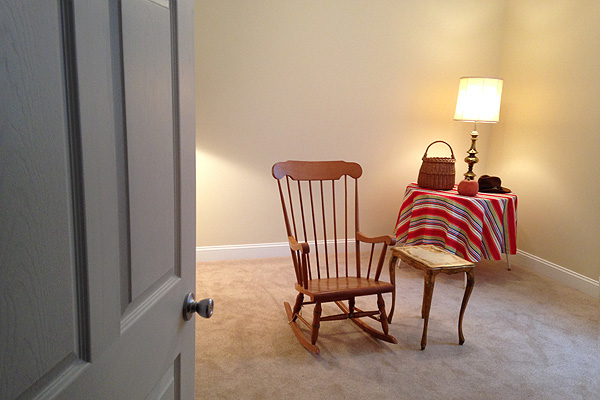Got space problems? Changing the way your door swings might help.
A 32-inch door typically eats up about 13 square feet of floor space when it swings. Change the door swing and you can decide where to place that wasted space — on the left or right of your doorway or on the inside or outside of the wall.
Here are Some Advantages of Changing the Swing:
- Change the swing from inside to outside and you can reclaim the entire 13 square feet in a small room, which could let you have that sofa after all.
- Change the swing from left to right (or vice versa) and you free up the wall space where the door would rest. Now you’ve got room for a desk, table, or dresser.
- Remove the door and switch to a sliding or pocket door, and you have 13 square feet to use any way you want.
When I refinished part of my basement into a bedroom-bathroom suite, I wrestled with door-swing issues. When the door opened only into unfinished space, it was no problem. But when I remodeled the space, the right-swinging door opened into the suite just a hair past the wall of the new bathroom.
The first impression of the new space was cramped and uncomfortable. The carpenters changed the door swing before I could take good “before” pictures, but here's a look at the space now.

I changed the door to swing left and come to rest in a little nook not big enough for anything else. My carpenter charged about $100 to change the swing. Now, I walk into the middle of the bedroom, which looks and feels much better, and the freed-up wall space can house a bookcase or chest of drawers.

Related: Evaluate Your House for Basement Finishing
DIY Basics
Changing the way a door swings might take a carpenter about an hour. But you can do it yourself if your carpentry skills are up to snuff. Here’s how:
- Remove the existing door, hinges, and strike plate from the door jamb. (If you're moving the door so that it swings from the opposite side, but still swings into the same room, you won't have to change the door stop molding.)
- Router or chisel new hinge and strike plate recesses on the opposite jamb. (This video will teach you how to router the hinge recesses. This video will show you how to chisel new hinge recesses.)
- Repair the old hinge locations with wood putty or filler, then prime and paint the jamb.
- Rehang the door.
- Relocate the doorstop bumper that prevents the door from hitting the wall. Patch and paint the old hole.
If you're changing the door so that it swings into a different room, you can remove the entire door jamb and turn it around:
- Remove the hinge pins and take off the door, leaving hardware in place.
- Pry off the casing. If you can save it, great; it often breaks, though, so be prepared to buy new casing.
- Pry off the door jamb, or use a reciprocating saw and metal-cutting blade to cut the nails holding the door jamb in place.
- Reverse the door jamb and reinstall it.
You can save yourself a lot of hassle by installing a new, prehung door ($30 to $250 that swings the way you want. That way you avoid all that moving, routing, and patching.
Code Issues
The International Residential Code doesn’t rule on bedroom door swings. But unless space is an issue, most bedroom doors swing in. That way, if you have to get out in an emergency, the bedroom door doesn’t swing into a hallway blocking or hitting others also fleeing for their lives.
Of course, each local ordinance has its own building code, though most work off the IRC. To be safe, check local codes before construction.